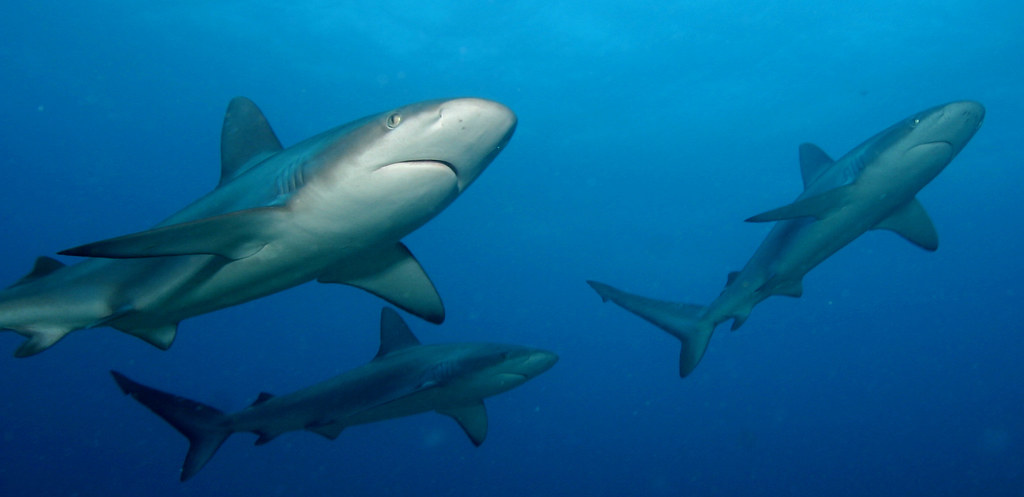Communication between animals has always been a topic of discussion among the researchers because of the unclear meaning of the word “communication”, as animals do not interact with each other as simply as you communicate with other people! But it is true that animals do communicate with each other by using their senses and intelligence in a very precise way.

In case of sharks, they are known to be the most fascinating creatures of the oceans and has been swimming and floating in the oceanic water for about 400 million years and with the passage of time they undergo many evolutionary changes but the one thing that never ever changes among all the species of sharks is their aptitude to connect and communicate with each other. Well, the mystery needed to be solved is how do they communicate and other methods to adapt to interconnect with each other. This article will definitely help you out to find the answer to your question. Let’s jump into the details and communicate with sharks!
How do sharks communicate with each other?
Do sharks gossip with other sharks or make speeches like humans do? Imagine a 2 giant monster sitting along the shoreline – talking and laughing. How funny it would be! But that’s probably not going to happen ever! Sharks communicate with each other to find their perfect mates, to search and share food to protect each other from predators or enemies. Sharks usually live in a group called “schools” so it is obvious that they communicates and interact with each other
The prime mode of communication among sharks is by their movements and different body gestures. Sharks do not produce sound or talk to other sharks because they do not have vocal cords. They are mostly silent and furtive living beings of the ocean. Sharks communicate with each other by changing their body position and signal to other sharks about their mood either relaxed or aggressive. Various ways by which sharks communicate and give signals to their mates are listed below:
Do sharks communicate with each other by Fins?
Like humans use arms to communicate with others by the sense of touch, in the same way sharks use their fins to communicate, they use their pectoral fins to touch other sharks and tell them about their temper whether they are in a peaceful mood or in an aggressive mood. Moreover, when sharks sleep, it keeps the pectoral fins very close to their body which indicates that they are relaxed but they feel any danger around them, they protrude the pectoral fins in the outward direction and send signals of annoyance and aggression to their enemies.
Not only with pectoral fins, sharks also used their dorsal fins to communicate, when they point the dorsal fins in the upward position it specifies their fierceness toward other sharks that swims in their vicinity and when they keep their fins and body close to the surface of water shows that they are relaxed, safe and swims without any threats in the surrounding.
Do sharks communicate with their electroreceptors?
Yes! Sharks communicate with each other by the electroreception method, they bear a special type of organ called Ampullae of Lorenzini which detects the electric field, vibrations or small movement made by other animals near them and become alert. They also communicate by detecting the pheromones produced by the opposite mate which shows the desire to mate.
Moreover, they were also capable of detecting the vibrations in the water by another special organ called a Lateral line, they were able to navigate in the surrounding water by detecting the vibration and locate their prey or finding mate.
Are sharks capable of olfactory communication?
Yes! Sharks rely a lot on their sense of smell to communicate with other sharks, water moves through their nostrils to smell different scents, the nostrils are located quite far away from each other and were able to smell two distant scents from each nostrils and detect the location of the object they smelled. Sharks also find their mate by smelling the odour of their mate and also locate the prey by the smell of blood.
Do sharks communicate by arching their bodies?
The answer is the same as above – Yes! The ocean beast looks very beautiful when gliding along the water tides, looks like it is playing – might be! Sharks curved or bending their body to communicate, it was their special position to convey their messages to their mates or enemies – just as you send a message full of emoji indicating your current mood! Sharks warn their enemies by sending signals of anger. These body signs also show their defensive mood to regain their energy and strength to fight or avoid the threats.
Do sharks communicate by a gaping mechanism?
This mode of communication in sharks is also known as maintenance responses. According to some research, sharks also communicate by gapping means when they are feeding, they keep their jaws protruding in the outward direction, this position indicates the signs of threats, stress and hypoxia.
Do sharks communicate with humans?
Another Yes! Sharks send various signals when they see divers around them, they do show visible signs but researchers were not able to fully understand them. The behaviour and mood of sharks varies a lot when they encounter any person. Their body language shows that whether they are happy or aggressive to see humans in their home – it’s all up to them! However some studies have shown that extravagant looping, rolling and zigzag swimming patterns are the signs of their angry mood.
What does it conclude?
Sharks live in schools so they definitely communicate with each other but not by talking or making speeches as they lack vocal cords, their interaction is entirely based on their body language and senses. They not only communicate with other ocean creatures but also with humans by sending signals of intention! We hope you have gained enough knowledge about how sharks interact with the species that are miles away from them.







